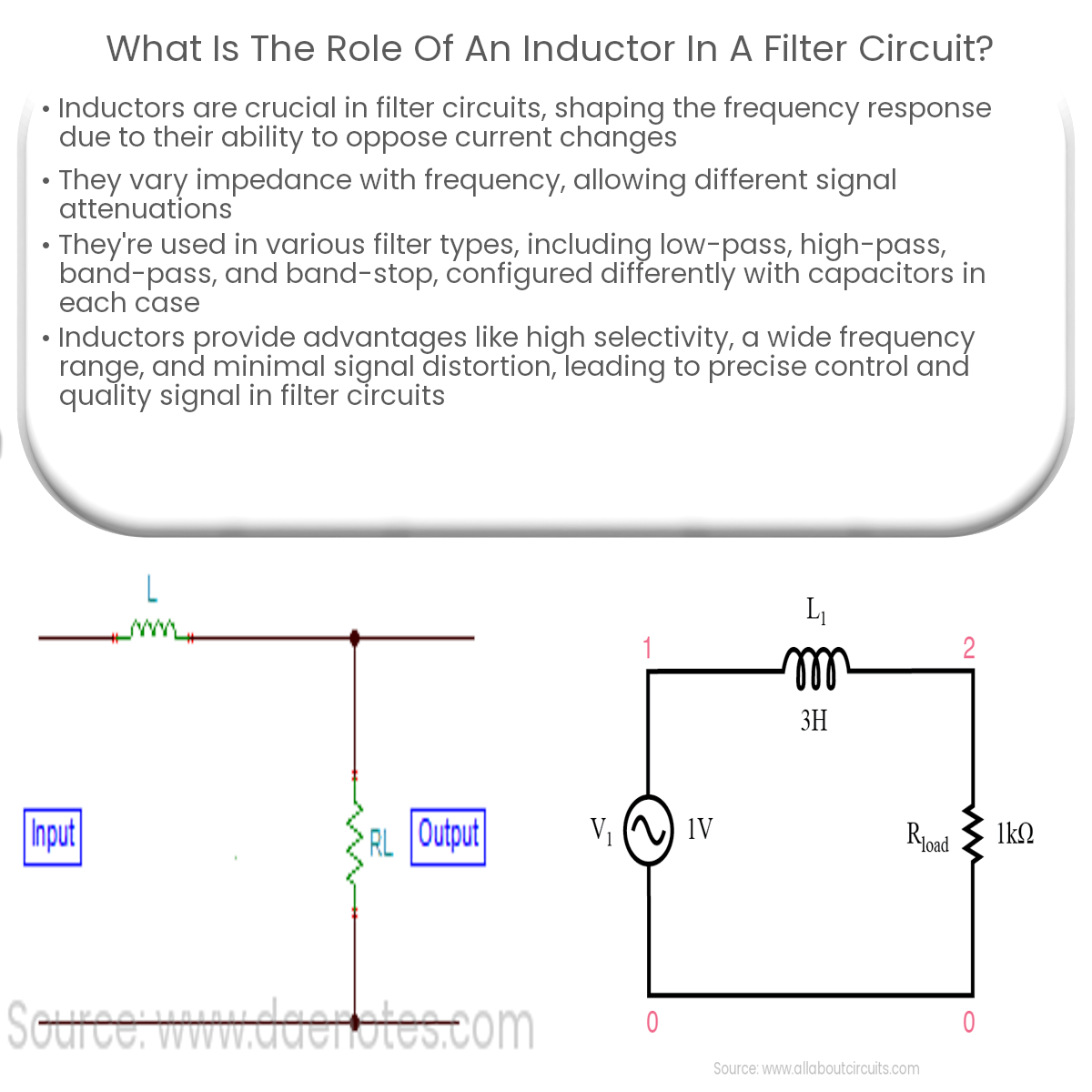Inductors in filter circuits shape the frequency response by allowing or attenuating signals based on their frequency-dependent impedance.
The Role of an Inductor in a Filter Circuit
An inductor is a passive electronic component that stores energy in a magnetic field when current flows through it. It has the ability to oppose the change in current, making it an essential element in filter circuits. Inductors play a crucial role in shaping the frequency response of filter circuits and are commonly used alongside capacitors to create various types of filters.
How Inductors Work in Filter Circuits
In a filter circuit, the impedance of an inductor changes with frequency. At low frequencies, the inductor presents a low impedance, allowing the signal to pass through with little attenuation. As the frequency increases, the inductor’s impedance also increases, causing the signal to be attenuated. This frequency-dependent impedance is critical to the functioning of filter circuits.
Types of Filters Using Inductors
- Low-pass filters: Inductors are used in low-pass filters to allow low-frequency signals to pass through the circuit while attenuating higher frequency signals. The inductor is typically connected in series with the load, while a capacitor is connected in parallel to the load.
- High-pass filters: In high-pass filters, the inductor is connected in parallel with the load, while a capacitor is connected in series with the load. In this configuration, the inductor attenuates low-frequency signals, allowing only high-frequency signals to pass through the circuit.
- Band-pass filters: A band-pass filter is a combination of a low-pass and high-pass filter. Inductors are used in these circuits to allow a specific range of frequencies to pass through, while attenuating frequencies outside of this range.
- Band-stop filters: Also known as notch filters, band-stop filters are designed to attenuate a specific range of frequencies while allowing all other frequencies to pass through. Inductors are used in conjunction with capacitors to create the frequency-dependent attenuation.
Advantages of Using Inductors in Filter Circuits
Inductors offer several advantages in filter circuits, including:
- High selectivity: Inductors provide sharp roll-off characteristics, allowing for precise control of the filter’s frequency response.
- Wide frequency range: Inductors can be used in filter circuits to target a broad range of frequencies, from low-frequency audio signals to high-frequency radio signals.
- Minimal signal distortion: Inductors introduce minimal phase shift and signal distortion, making them ideal for filter circuits where signal quality is paramount.
In conclusion, inductors play a vital role in shaping the frequency response of filter circuits. They enable the design of filters with a high degree of selectivity, ensuring the desired frequencies are passed or attenuated as needed.


